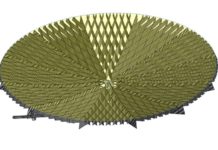After delays on August 11 and 12, after which the launch was scrubbed and postponed, the Japan Aerospace Exploration Agency (JAXA) finally launched its Michibiki 3 satellite on August 19, at 2.29p.m. JST (Japan Standard Time).
The satellite was launched to Geostationary Transfer Orbit (GTO) using JAXA’s medium-lift launcher, Mitsubishi Heavy Industries’ H-IIA Launch Vehicle No. 35, and separated from the launcher approximately 28 minutes and 37 seconds after liftoff. The entire event was smooth and precise, giving no indication of the problems with the rocket’s helium valve detected on August 12.
Michibiki 3 is the third and largest satellite to date in Japan’s Quasi-Zenith Satellite System (QZSS), a proposed constellation of seven satellites that will serve as a satellite-based augmentation system. QZSS will enhance the Global Positioning System (GPS) in Japan and its surrounding areas, and will boost it to a centimeter-level of accuracy.
The first Michibiki satellite was launched in 2010, and the second, Michibiki 2, was launched in June this year. JAXA expects to launch Michibiki 4 later this year, thus completing a constellation of four satellites that will be operational by 2018. The remaining 3 of the 7 satellites will be launched subsequently, after operations begin.
JAXA has not yet announced when its next launch will take place, and none is expected to occur until late 2017 or early 2018. Presumably, JAXA’s next launch will either be of Michibiki 4 or the UAE’s KhalifaSat/JAXA’s GoSat. The launch yesterday was JAXA’s fifth this year.







